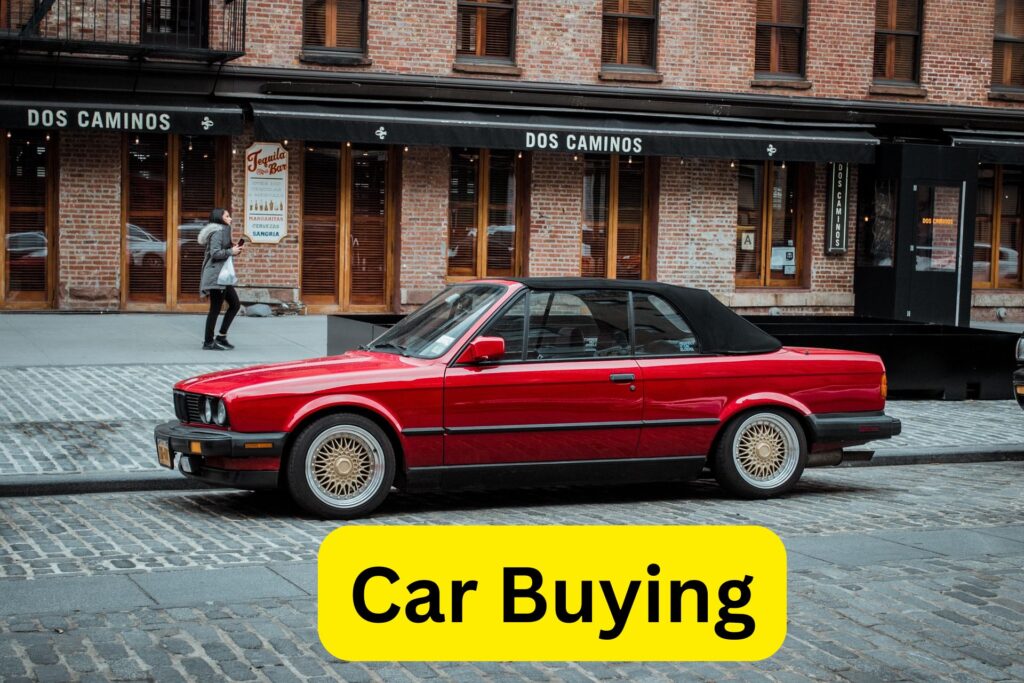The Best Time to Buy a Car in the USA: A Strategic Guide for Savvy Shoppers
Buying a car is a significant financial decision, and timing your purchase can save you thousands of dollars. Whether you’re eyeing a new sedan, a rugged SUV, or a pre-owned vehicle, understanding the cyclical nature of the automotive market is key to securing the best deal. In this comprehensive guide, we’ll break down the ideal times to buy a car in the USA, factors that influence pricing, and actionable tips to maximize savings—all while avoiding common pitfalls. The Best Time to Buy a Car in the USA
Why Timing Matters in Car Buying

Car dealerships operate on sales quotas, manufacturer incentives, and seasonal trends. These factors create predictable windows when dealers are motivated to slash prices, offer rebates, or clear inventory. By aligning your purchase with these periods, you gain leverage to negotiate better terms, lower interest rates, or even score complimentary add-ons like extended warranties. Let’s explore the best times to hit the dealership.
1. The End of the Month, Quarter, or Year
Dealerships and sales teams work toward monthly, quarterly, and annual sales goals. As these deadlines approach, pressure mounts to meet targets, which often leads to aggressive discounting.
- End of the Month: Salespeople may offer deeper discounts or waive fees in the final days to hit their personal quotas.
- End of the Quarter (March, June, September, December): Manufacturers sometimes offer dealers bonuses for hitting quarterly targets, incentivizing them to cut deals.
- End of the Year (December): Dealerships aim to clear out current-year models to make room for new inventory. Expect holiday promotions, cashback offers, and low APR financing.
Pro Tip: Visit the dealership during the last week of the month, preferably on a weekday when traffic is slower. The Best Time to Buy a Car in the USA
2. Holiday Weekends and Sales Events
Holidays are synonymous with car sales. Dealers capitalize on long weekends by hosting themed promotions:
- Memorial Day, Labor Day, and Presidents’ Day: These weekends often feature “Doorbuster” deals, 0% APR financing, or bonus cash incentives.
- Fourth of July: Look for red, white, and blue sales with discounts on select models.
- Black Friday and Year-End Sales: Late November through December combines holiday cheer with steep discounts, especially on slower-selling vehicles.
Caution: While holiday sales are lucrative, avoid getting swept up in high-pressure tactics. Research pricing ahead of time.
3. Model Year Transition: Late Summer to Early Fall
New model-year vehicles typically arrive in late summer (August–September). To clear out older inventory, dealers discount previous-year models aggressively. For example, a 2023 model in August 2024 could see price drops of 10–20%.
Why This Works:
- Older models are identical to newer ones except for the year designation.
- Dealers prioritize moving “old” stock to free up space.
Best for: Buyers willing to sacrifice the latest tech for significant savings.
4. Winter Months (January–February)

Post-holiday winters are slow for dealerships, making it a prime time to negotiate. Cold weather keeps shoppers indoors, so dealers may sweeten deals to attract buyers.
- January: After the holiday rush, dealers reset goals and may offer clearance sales.
- February: Combine Presidents’ Day promotions with low winter demand for extra leverage.
Bonus: Convertibles and sports cars see bigger discounts in winter, while SUVs and trucks are pricier due to seasonal demand. The Best Time to Buy a Car in the USA
5. Weekdays vs. Weekends
Timing your visit by day of the week can also impact savings:
- Weekdays (Tuesday–Thursday): Showrooms are quieter, giving you more attention and flexibility to negotiate.
- Weekends: Higher foot traffic means salespeople are busier and less likely to offer personalized deals.
Strategy: Test-drive on weekends but return on a weekday to finalize the purchase.
6. Tax Season (April–July)
Tax refunds flood the market in spring, creating a surge in demand—especially for used cars. However, this isn’t the best time for deals. Instead, consider:
- Late July: After the tax-refund rush subsides, used car inventories rise, leading to competitive pricing.
7. When New Incentives Are Announced
Manufacturers roll out new incentives at the start of each month. Check automakers’ websites on the 1st or 2nd to discover fresh rebates, subsidized leases, or special financing rates.
Example: A $2,000 cash rebate on a specific SUV model or 1.9% APR for qualified buyers.
8. Avoid Peak Buying Seasons
Spring and summer are popular times for families to buy cars, leading to higher prices and less negotiation room. Convertibles, motorcycles, and RVs also peak in warmer months.
Exception: Electric vehicles (EVs) may see discounts during green energy promotions or tax credit adjustments.
Current Market Considerations (2024–2025)
The post-pandemic auto market has shifted dramatically. Inventory shortages and high demand led to inflated prices, but the market is slowly stabilizing.
- New Cars: Production delays persist for some brands, but incentives are returning as supply improves.
- Used Cars: Prices remain high, but interest rates are softening. Shop Certified Pre-Owned (CPO) vehicles for better financing terms.
Key Insight: Compare online prices using tools like Kelley Blue Book or Edmunds to identify fair market value before negotiating.
Negotiation Tips for Any Season
Even during optimal times, smart negotiation is crucial:
- Get Pre-Approved Financing: Secure a loan from your bank or credit union to bypass dealer markups.
- Focus on Out-the-Door Price: Negotiate the total price, including fees, rather than monthly payments.
- Leverage Competing Offers: Use quotes from multiple dealers to drive down the price.
- Time Your Test Drive: Visit at the end of the day when salespeople are eager to close deals.
Final Thoughts: Flexibility Pays Off
While timing your purchase around these periods maximizes savings, stay flexible. If you need a car immediately, focus on pre-researching fair prices and using competition to your advantage. Keep an eye on inventory trends, manufacturer announcements, and economic factors like interest rates.
By combining strategic timing with assertive negotiation, you’ll drive away with a great deal—and a new set of keys.
Read More: Best Meal Prep Strategies for Fast Weight Loss Success
Finance and Business blog: News9 india
The Best Time to Buy a Car in the USA
